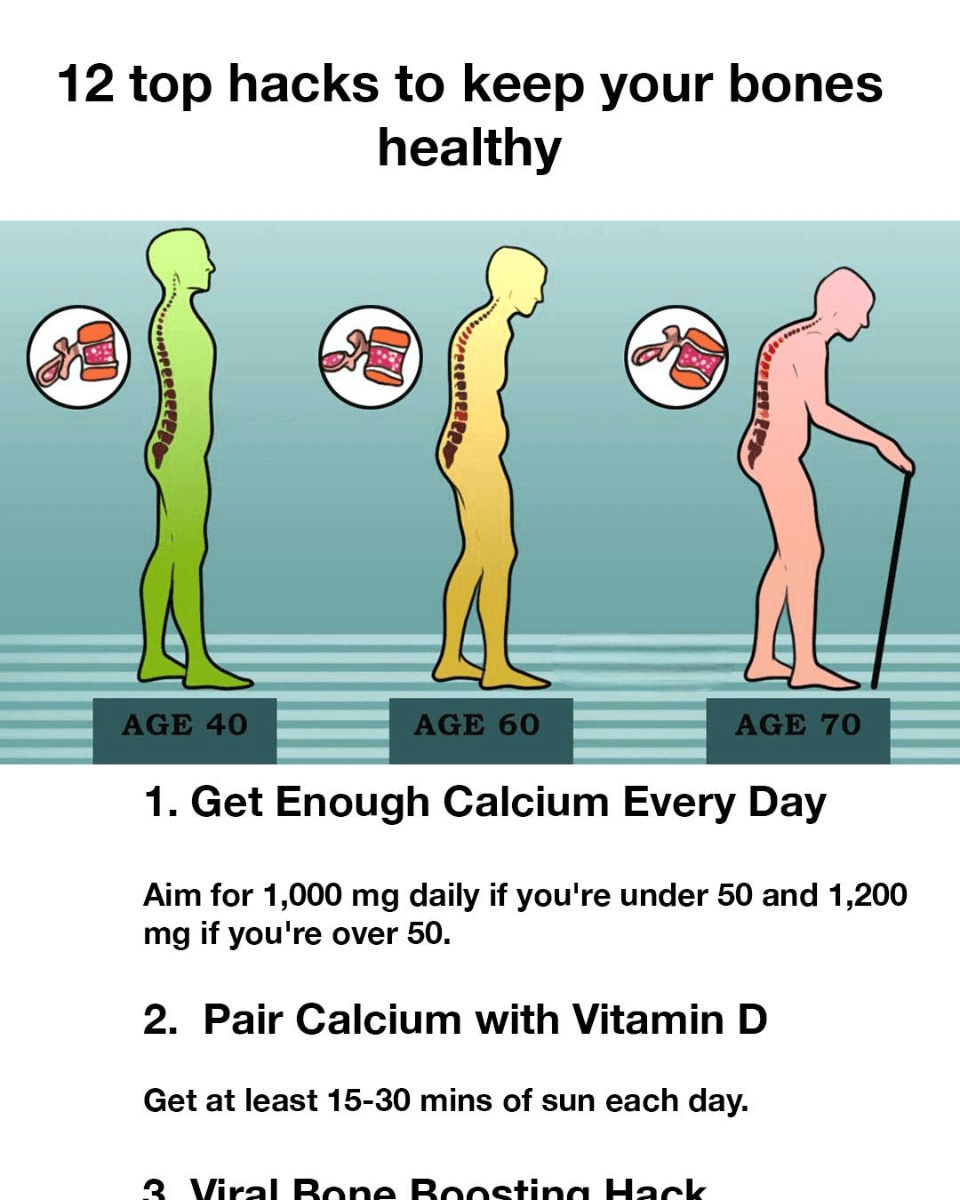As we grow older, our bones naturally become less dense, increasing the risk of fractures, osteoporosis, and joint discomfort. The upside? You can take control of your bone health at any age. Whether you’re in your 40s looking to prevent problems or in your 70s aiming to preserve mobility, small lifestyle changes can go a long way. From nutrition and exercise to daily habits that slow bone loss, adopting the right strategies can help you stay mobile, independent, and pain-free for years.
This guide outlines 12 evidence-based tips to support strong, healthy bones. These straightforward, effective strategies—like boosting calcium and Vitamin D, doing weight-bearing workouts, and improving balance—are especially beneficial for those in their 40s through 80s. With a few routine tweaks, you can build denser bones, lower fracture risk, and enjoy a better quality of life. Let’s get started on protecting your bones for the future.
1. Prioritize Daily Calcium Intake
Why it works: Calcium is the core mineral in bone. If your diet lacks enough, your body pulls it from bones, weakening them.
How to do it:
- Get 1,000 mg per day if under 50, or 1,200 mg if over 50.
- Eat calcium-rich foods like dairy, leafy greens, almonds, and fortified options such as plant-based milks.
- Consider a supplement if needed, but don’t exceed the recommended dose—too much may lead to kidney stones.
2. Combine Calcium with Vitamin D
Why it works: Without enough Vitamin D, your body can’t absorb calcium efficiently—even if you consume enough.
How to do it:
- Spend 15–30 minutes in the sun daily.
- Eat Vitamin D-rich foods like fatty fish, eggs, and fortified dairy.
- A Vitamin D3 supplement can help if you’re not getting enough—consult your doctor.
Viral Tip: The Prune Challenge – Eat 5–6 Prunes a Day
Why it works: Prunes, or dried plums, support bones by reducing calcium loss and inflammation. They’re high in potassium, Vitamin K, and antioxidants.
How to do it:
- Eat 5–6 prunes daily as a snack, in yogurt, or blended into smoothies.
- For extra benefit, increase to 10–12 daily, but do so gradually to prevent digestive upset.
- Try it for 6 months—studies show prunes can improve bone density.
Bonus: Prunes also promote gut health and may naturally help prevent osteoporosis.
3. Do Strength Training
Why it works: Weightlifting or resistance exercises stimulate bone growth and improve balance, reducing fall risk.
How to do it:
- Lift weights, use resistance bands, or perform bodyweight moves like squats.
- Aim for 2–3 sessions weekly.
4. Add Weight-Bearing Activity
Why it works: Bones respond to impact with increased density.
How to do it:
- Walk, jog, dance, play tennis, or take the stairs for 30+ minutes most days.
- Swimming and biking are great for health, but mix them with weight-bearing workouts.
5. Eat Magnesium and Vitamin K
Why it works: These nutrients enhance calcium absorption and bone formation.
How to do it:
- Magnesium-rich foods: nuts, seeds, whole grains, and dark chocolate.
- Vitamin K sources: leafy greens like kale, spinach, and Brussels sprouts.
6. Cut Back on Alcohol and Caffeine
Why it works: Both can hinder calcium absorption and bone integrity.
How to do it:
- Limit alcohol to one drink per day for women, two for men.
- Keep caffeine to 1–2 cups of coffee per day.
7. Stop Smoking
Why it works: Smoking reduces bone-building blood flow and interferes with calcium uptake.
How to do it:
- Seek medical help to quit smoking.
- Replace the habit with healthy alternatives like walking or deep breathing.
8. Increase Protein Consumption
Why it works: Protein helps form the bone matrix, the supportive structure of bone tissue.
How to do it:
- Eat lean protein sources like eggs, beans, chicken, fish, or tofu.
- Include protein in every meal.
9. Lower Salt Intake
Why it works: Too much sodium causes calcium loss through urine.
How to do it:
- Avoid ultra-processed or fast foods high in salt.
- Cook with herbs, spices, and lemon juice instead of salt.
10. Stay Hydrated
Why it works: Water keeps joints lubricated and reduces injury risk.
How to do it:
- Drink at least 8 glasses of water a day.
- Avoid sugary drinks that may deplete nutrients.
11. Focus on Balance and Flexibility
Why it works: Better balance means fewer falls and fractures.
How to do it:
- Try yoga, tai chi, or balance drills like standing on one leg.
- Stretch regularly to improve flexibility and reduce stiffness.
12. Schedule Bone Density Tests
Why it works: A DEXA scan can detect early bone loss before it leads to fractures.
How to do it:
- If you’re over 50 or at risk, talk to your doctor about testing.
- Follow your provider’s recommendations for strengthening bone if needed.
